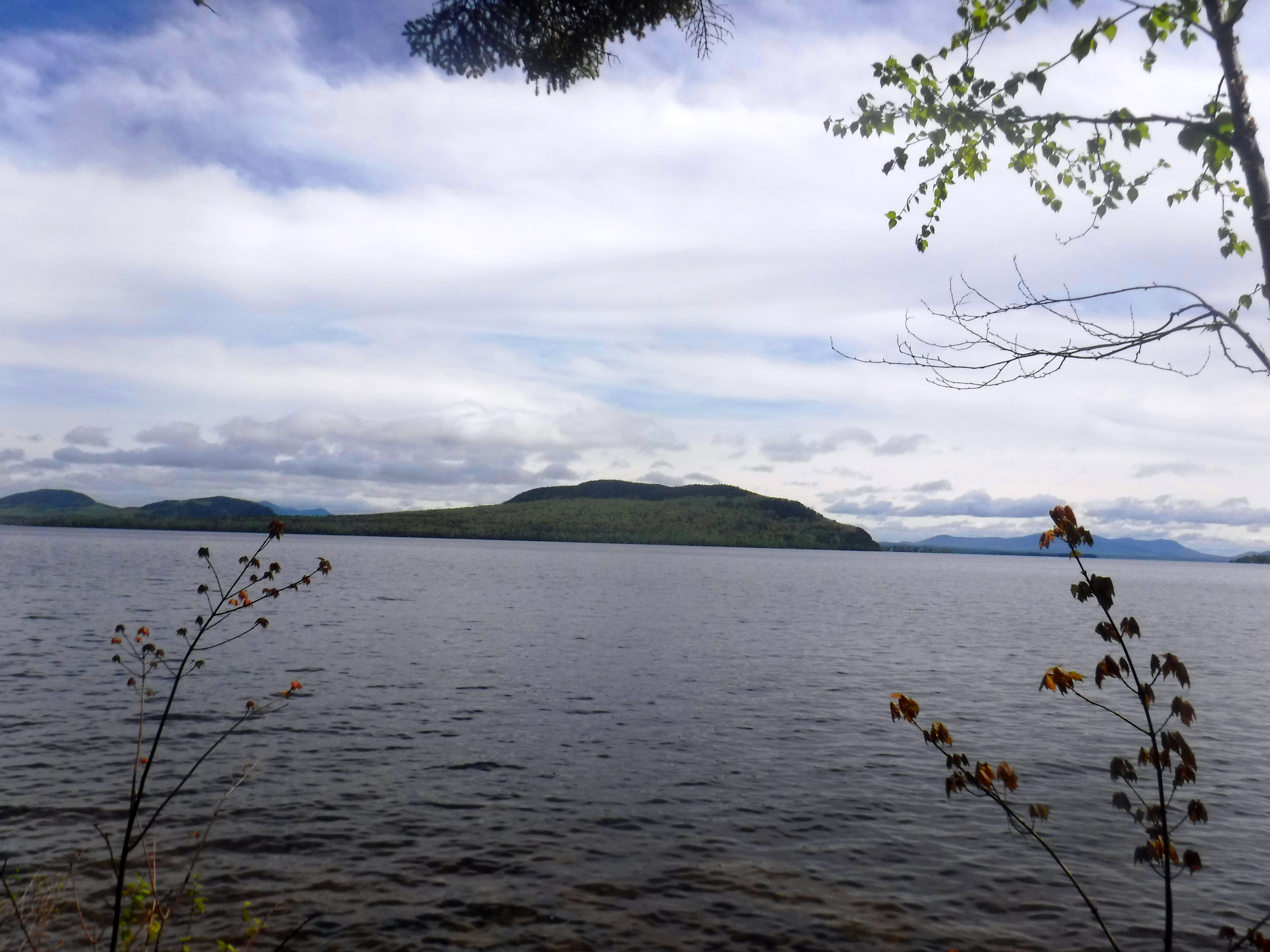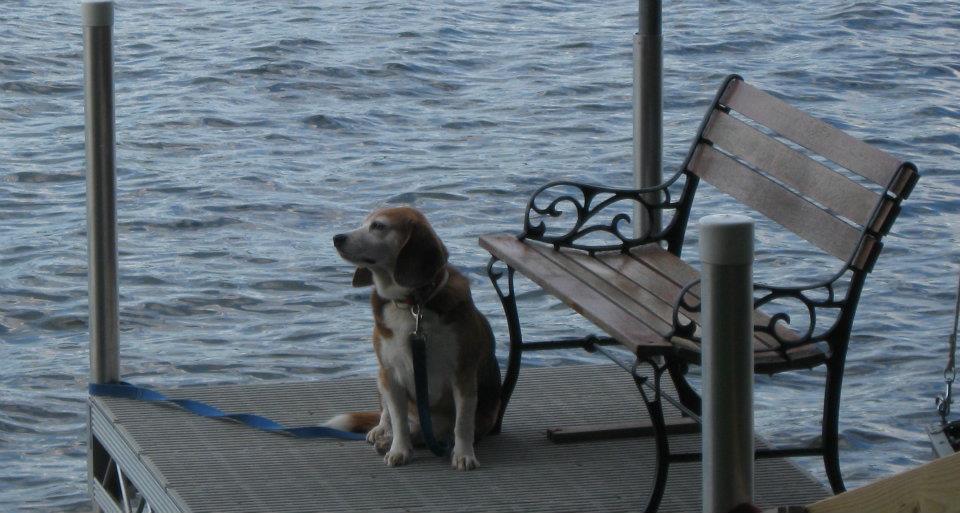If by some Christmas miracle the ghost of my Nana could have visited Kineo, she would have gently cradled his head, met his big brown eyes with her own, and said: “If it ain’t your hip, it’s your ass or your elbow.”
Even though he’s not a little, old Scottish lady but an old beagle, Kineo would have agreed. Maybe not about the hip part because, last we could tell, his hips were fine. But his ass end and elbow? Not so good. And one eye was pretty sore, too.
He wasn’t supposed to be a Christmas catastrophe. He was supposed to be all healed up from his minor “elective” surgeries. He was supposed to snap right back just in time for his mommy and daddy to drop him off at doggy daycare and celebrate their 40th anniversary in the balmy Bahamas without worrying about his beagle boo-boos. But, of course, he hadn’t really elected to be operated on. He never said “Oh, sure, as long as I need to have a cyst taken off my elbow and a skin tag off my eyelid, you might as well go ahead and take my testicles, too, while I’m under.” We said that on his behalf—and then forged merrily ahead with our best laid plans.
The pre-op vets concurred. Kineo was a Stugged Wonder. Well, actually Stugged (Sturdy+Rugged=Stugged) Wonder was our nickname, but they saw how he got it. “Wow, he’s so strong and healthy for an eleven and a half year old dog!” said the Maine Woods Mobile vet, who previously only saw him for an average of ten minutes a year to administer vaccinations. Unlike his older brother Toby (may he rest in perpetual peace ‘neath the rabbit tracks in the back yard), Kineo was not plagued by assorted issues. Unlike Toby, the only PetMD search Kineo had ever prompted was “Why does my dog insist on eating dirt?” Yup, naming him after a stugged Maine mountain had been a good call. And we were super proud (and kinda cocky) that we could rely on quick trips to the Oquossoc Fire Station once in a great while when the backwoods vet swung through to meet his health needs.
‘Twas a few days before Christmas when Kineo finally set feet inside a real animal clinic in Farmington. “Wow, he’s in really great shape for an old dog,” the vet remarked. “He should do fine.” He wagged his tail and sniffed, totally unaware that this first-time visit was gonna be a doozie. Why risk anesthesia just to neuter the old boy, we always said. But now that Kineo was a candidate for one-stop surgery, might as well “fix” the potential plumbing issues that plagued old Toby and, while we were at it, make him a better playmate for his doggy girlfriends, we figured. So we signed all the consent forms to “get ‘im done” and left to do some last-minute gift shopping.
“Mommy bought you a can of Ol’ Roy filet mignon flavor dog food for Christmas!” I told Kineo when he walked gingerly out of recovery later that day. He wagged his tail, unfazed and not too much worse for wear after his stem-to-stern overhaul. “Do we need to put one of those cone head collars on him?” I asked almost as an afterthought as we were leaving the clinic.
“Is he a licker?” the vet wondered.
“You mean like Baileys or Kahlua?” I thought to myself. “No he’s a good boy,” I said. “We’ll keep an eye on him.” We lifted him into the Subaru and went on our way back up the mountain, leaving the $12 plastic cone (that the vet had in ample supply for a very good reason) an hour a half away in Farmington.
It took a few days for the anesthesia to wear off and Kineo’s instincts to kick in. Apparently, he didn’t agree with the post-op instructions to let the stitches dissolve gradually as he healed. He preferred to try to self-heal—to tug out those silly little suture knots and lick his wounds to his heart’s content. By then, of course, keeping an eye on him meant never closing our eyes at the same time for more than a second, night or day. And keeping both ears open, too.
“Heard him going after himself again at about 3 a.m.,” Tom said wearily when I found him curled up on the sofa with the dog’s head in a gentle but firm vice grip for the third morning in a row. “The little bugger got a pretty good head start on reopening his incisions before I got to him.” From parenting newborns to providing hospice care and everything in between, we were keen to all manner of threatening night time sounds. But, until then, chronic dog lapping had not been one of them.
That’s when our answer to the perfunctory “How was your Christmas?” line of questioning changed from relating our travel and festive dinner plans to quietly smirking and saying our holiday was different this year. We didn’t think folks wanted or needed the whole ugly truth: We spent Christmas peering at our dog’s shriveled sack and zippered elbow, fretting about foul discharge and how to keep his head pointed up and away till we could talk to the vet. And, being resourceful Rangeley woods dwellers, we became very, very inventive. We adapted YouTube videos about homemade cone collars to make use of materials already on hand. For the first prototype, Tom cut a cone shape out of a giant laminated poster I’d kept from my cranio-sacral therapy training and affixed it with Velcro strips and duct tape. But that didn’t stop our Beldar Conehead beagle. He became a 3-D illustration of the human spinal column and how a canine can twist his vertebra like a Slinky. Prototype # 2 featured an airplane neck pillow, a rolled up towel, a backwards tee-shirt and tons more duct tape. It kept Kineo from reaching his elbow but was no match for his Houdini hound contortions toward his crotch.
How the heck Dr. Jeff the Rocky Mountain Vet could go to Mexico and all over creation to spay and neuter hundreds of dogs and let them walk out of the free clinics unfettered by any head gear became a subject of fascination for me. Maybe Animal Planet just didn’t want to show all the “bad” dogs who ended up festering in the jungle. Or maybe I had a particularly tenacious licker on my hands. Regardless, there I was, a few days after Christmas, snapping a photo of oozing dog junk stitches to send to the vet in Farmington for further instructions. (And making a note to myself to delete that image from my Christmas in Rangeley 2017 photo album as soon as possible!)
“Anyone coming through Farmington today who could pick up a cone collar and antibiotics from my vet on their way up?” I posted on the Where Can I Find It In Rangeley Facebook page. Less than a minute later, I got a yes from a beagle lover and my new best friend, Amy Cooper. And just in time, too. While Tom went to town to meet her, I was “keeping an eye” on Kineo as he lounged by the wood stove. I was doing OK—not eating or going to the bathroom or anything besides staring at his intact sutures. Until the nanosecond in which I left the room to grab my glass of water, and came back to the dreaded sound of serious, hard core slurping.
Tom came home to find me one-arming Kineo’s head on my lap, while my other hand pinched his bleeding elbow boo-boo into a desperate version of a backwoods butterfly closure. We clamped him into the “cone of shame,” pumped him with penicillin, and heaved a huge sigh of relief. He had no choice now but to hunker down and heal up.
“Spending New Years Eve with this ol’ dubber, (my parents’ 11 and a half year old beagle) keeping him from incessantly noming on his nads,” Helen posted on Facebook. The caption prompted plenty of comments on how she could liven up her baby sitting stint with festive cone decorations, including shoving plastic olives on a long stick into his cone and making him into a “beagle-tini.”
“Hah! He’s a liquor after all,” I commented with a smiley face.
We were in the Bahamas celebrating our anniversary, just far enough away from our chaotic Christmas to see the humor.
“Awwww…what a good boy!” we said.


 During our first summer together, Toby and I stayed tethered like that for hours on the porch. He could sit in my lap, watching the lake and the squirrels through the ripped screen door that used to be an escape route for beagles who wanted to get out, not get smothered. “But my Toby wants to stay with his Mumma,” I whispered, “and not be sick, or hurt or grow old too fast.” He always snuffled agreement and did his best to live up to my wishes, even when he started having seizures and other issues that weren’t on the original list. It was all good though. Toby was right where he needed to be, my “almost empty nest” beagle, a fairy tale with a few caveats. Over the years, Toby convinced me that raising kids without a dog was definitely wrong, and I was a giant eight-year-old. He even helped Tom and me feel like we were still young, trusting and foolish enough to bring yet another dog into our lives. Coaxed by Toby’s gentle ways, we opened our hearts just wide enough to let the math going flying out of our heads. Two dogs plus another decade or so added onto our beagle legacy? We could do that! So we welcomed Kineo into the family. Bred by Butch and Sandy from the same stock as Toby, we named him after a rugged mountain in Maine, the backdrop to my childhood happy place. And there we were, blissfully roped and knotted tighter than ever, our two beagles romping out ahead of us toward our new life past middle age.
During our first summer together, Toby and I stayed tethered like that for hours on the porch. He could sit in my lap, watching the lake and the squirrels through the ripped screen door that used to be an escape route for beagles who wanted to get out, not get smothered. “But my Toby wants to stay with his Mumma,” I whispered, “and not be sick, or hurt or grow old too fast.” He always snuffled agreement and did his best to live up to my wishes, even when he started having seizures and other issues that weren’t on the original list. It was all good though. Toby was right where he needed to be, my “almost empty nest” beagle, a fairy tale with a few caveats. Over the years, Toby convinced me that raising kids without a dog was definitely wrong, and I was a giant eight-year-old. He even helped Tom and me feel like we were still young, trusting and foolish enough to bring yet another dog into our lives. Coaxed by Toby’s gentle ways, we opened our hearts just wide enough to let the math going flying out of our heads. Two dogs plus another decade or so added onto our beagle legacy? We could do that! So we welcomed Kineo into the family. Bred by Butch and Sandy from the same stock as Toby, we named him after a rugged mountain in Maine, the backdrop to my childhood happy place. And there we were, blissfully roped and knotted tighter than ever, our two beagles romping out ahead of us toward our new life past middle age.